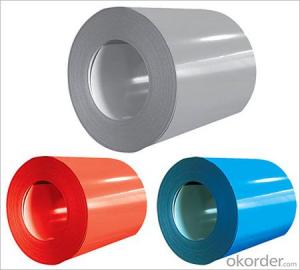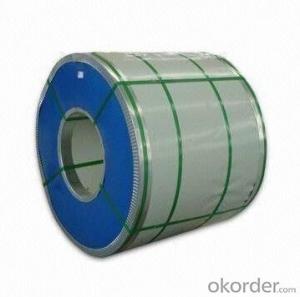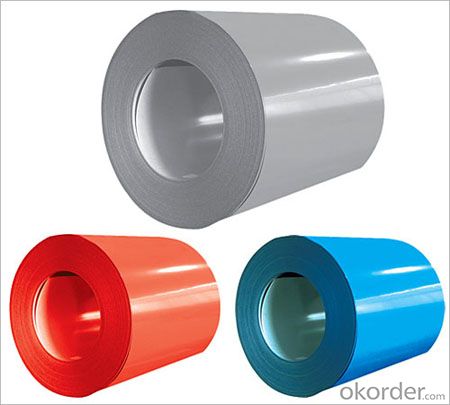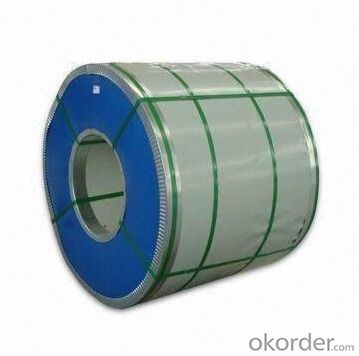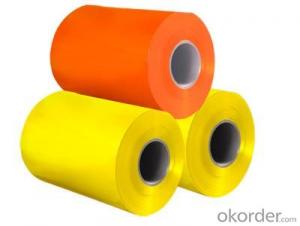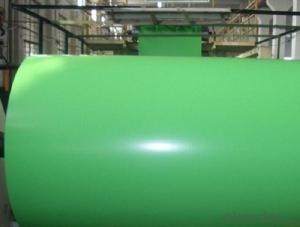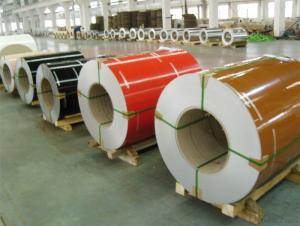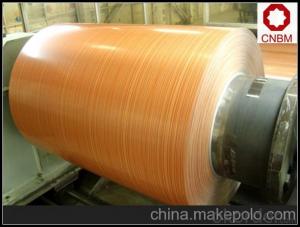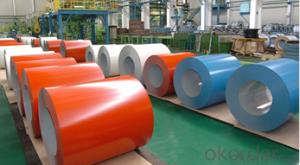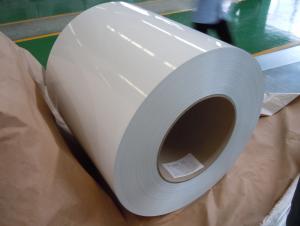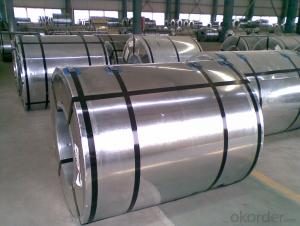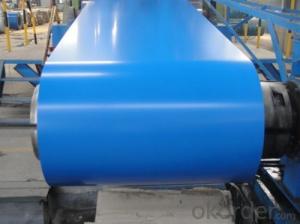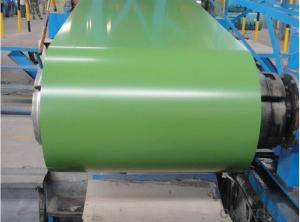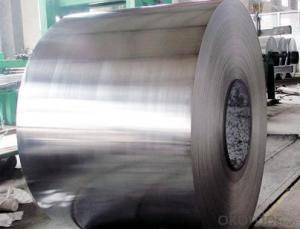Wholesale Ral Colored Prepainted Aluminum Coil Plate from China
- Loading Port:
- Qingdao
- Payment Terms:
- TT or LC
- Min Order Qty:
- 10 m.t.
- Supply Capability:
- 1000 m.t./month
OKorder Service Pledge
OKorder Financial Service
You Might Also Like
RAL Colored PPGL Steel Coil Plate from China
Main Features of RAL Colored PPGL Steel Coil Plate
Thickness: Customized, 0.12-2.0MM
Model Number: Q235/Q195/JISG/SPCD
Type: Steel Coil, Steel coil
Technique: Cold Rolled
Surface Treatment: Galvanized
Application: Boiler Plate
Special Use: High-strength Steel Plate
Width: Customized, 600-1250mm
Length: Customized
Grade: SGCC, SPCC, DC51D, SGHC,A653
Surface treatment: Galvanized
Zinc coating: 60-275g/sqm
HRB: 65-95
Coil weight: 3-10/MT
Tolerance: thickness+/-0.01mm
Characteristic RAL Colored PPGL Steel Coil Plate:
Standard:JIS G3302 / JIS G3312 / ASTM A653M / A924M 1998/GBT127542006,GB/T97611988,GB/T97541988, GB/T67391996, HG/T3830-2006, HG/T3830-2006, GB/T1732-93, GB/T9286-1998, GB/T1771-1991, GB/T14522-93
Raw material:SGCC,SPCC,DC51D,SGHC,A653,201,202,321,301,302,304,304L,316,316L,310,310S,409,410,430,439,443,445,441 and so on
FQA:
Guaranteed:If quality doesn’t match the description we give or promise before you place your order, we promise 100% refund.
Pictures for RAL Colored PPGL Steel Coil Plate:
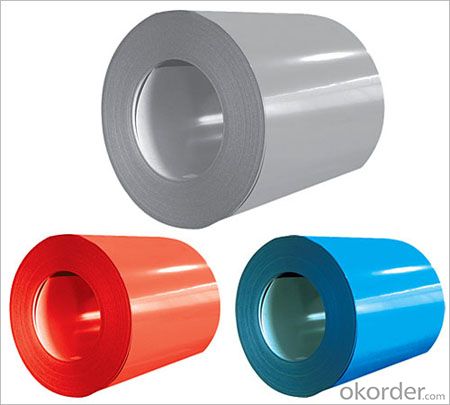
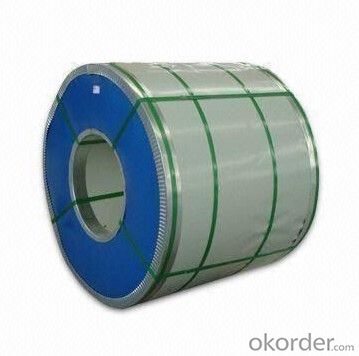
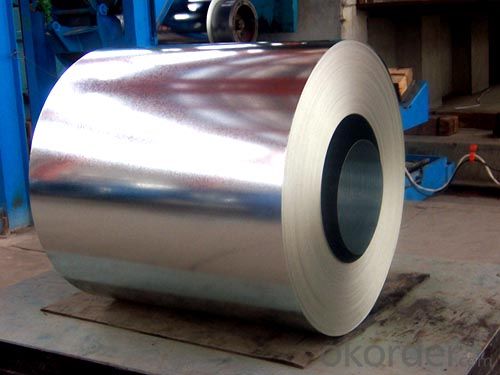
- Q: I want to separate the copper and aluminum so I will get more at the scrap yard for my radiators any one know of an easy way to do this? Thanks
- Does your scrapyard not have a good price for aluminum/copper radiators? Mine does. I Don't think you can separate them short of melting off the aluminum. The copper goes right through it. It would be a lot of work to separate them. Much more work than stripping copper wire. Before I take a load of scrap, I call all of the yards and get the best price. Sometimes this varies as much as $.50/pound on copper and radiators and brass and clean aluminum. Work with your phone, it will make you money. Last I checked, #1 copper 3.10/pound #2: 2.90, Radiators $1.50, Brass $1.40, Insulated copper wire $1.10 to $.90 Aluminum $.85 to $.55 dependingScrap Metal(steel). $9.00/100 Lets recycle Car batteries are $6 ea.
- Q: Are there any health risks associated with aluminum coils?
- Yes, there are some health risks associated with aluminum coils. When aluminum coils are heated, they can release small amounts of aluminum particles into the air, which may be inhaled. Prolonged exposure to high levels of aluminum particles may potentially lead to respiratory issues and lung damage. Additionally, there is a concern that aluminum particles could contaminate food if the coil is used in cooking or food storage. However, the health risks are generally considered to be low if proper ventilation is maintained, and aluminum coils are used within recommended guidelines.
- Q: 0.6mm insulation aluminum coil price insulation aluminum coil where to buy the most assured?
- If the surface of the aluminum color, it is directly on the Internet search color coated aluminum roll can be. Best site inspection, and now more factories, quality uneven
- Q: Can aluminum coils be used in high-magnetic field applications?
- Indeed, high-magnetic field applications can make use of aluminum coils. Being a non-magnetic material, aluminum lacks any magnetic properties, rendering it appropriate for such applications. This is particularly beneficial as the presence of a magnetic field could potentially disrupt the coils' performance or function. Consequently, aluminum coils find wide utilization across diverse industries, such as electrical engineering, aerospace, and automotive, all of which frequently encounter high-magnetic fields. Furthermore, aluminum boasts a lightweight nature and excellent electrical conductivity, making it an optimal selection for applications that necessitate efficient and lightweight coil designs.
- Q: The user is inquiring about the possibility of reusing their old aluminum coils or purchasing used ones.
- <p>Yes, you can reuse your old aluminum coils if they are still in good condition and meet the required specifications for your application. Reusing can be cost-effective and environmentally friendly. When buying used coils, ensure they are from a reputable source and have been properly inspected for any damage or wear that could affect performance. It's crucial to verify the coils' integrity and functionality before use to avoid any potential issues in your manufacturing or production process.</p>
- Q: Can aluminum coils be used in solar thermal systems?
- Certainly, solar thermal systems can utilize aluminum coils. Aluminum, renowned for its remarkable thermal conductivity, is widely employed in heat exchangers. Within a solar thermal system, aluminum coils can serve as a component of the heat exchanger, effectively transmitting the harnessed solar energy to the working fluid. By enabling efficient heat transfer, these aluminum coils guarantee the optimal utilization of the captured solar energy when heating water or other fluids. Moreover, aluminum's lightweight nature and resistance to corrosion render it an ideal material for outdoor applications like solar thermal systems.
- Q: Are there any special considerations for handling and storing aluminum coil scraps?
- There are specific factors to take into account when it comes to the handling and storage of aluminum coil scraps. To start with, it is crucial to handle these scraps with caution in order to prevent any potential injuries. Due to their sharp edges, workers should wear appropriate protective gear, such as gloves and safety glasses, while dealing with them. When it comes to storing aluminum coil scraps, it is of utmost importance to keep them in a dry and well-ventilated area. Moisture can cause corrosion in the aluminum, leading to the degradation of the material. To prevent this, it is recommended to store the scraps in a covered area or utilize moisture-absorbing materials. Moreover, it is essential to separate aluminum coil scraps from other materials, particularly those that can result in a chemical reaction or contamination. This is especially important if the aluminum coil scraps have been coated or treated with other substances. Furthermore, it is advisable to stack and store the aluminum coil scraps properly to avoid any damage or accidents. By stacking them in a stable manner and using appropriate equipment like pallets or racking systems, the risk of collapse or shifting can be minimized. Lastly, it is crucial to adhere to local regulations and guidelines regarding the handling and storage of aluminum coil scraps. These regulations may differ depending on the location and industry, so it is vital to stay informed and comply with any specific requirements. By taking these considerations into account, companies can ensure the secure handling, storage, and preservation of aluminum coil scraps, thereby reducing the possibility of accidents, damage, and deterioration.
- Q: 1) From What does aluminium derive its name?2)From which ore is aluminium extracted?3)Which country produces more aluminium than any other?4)An American and French scientist both patented the current process used to produce aluminium, what were there names?5)Who is credited with having been first to produce metallic aluminium?
- 1) From What does aluminium derive its name? Ancient Greeks and Romans used aluminium salts as dyeing mordants and as astringents for dressing wounds; alum is still used as a styptic. In 1761 Guyton de Morveau suggested calling the base alum alumine. In 1808, Humphry Davy identified the existence of a metal base of alum, which he at first termed alumium and later aluminum . The earliest citation given in the Oxford English Dictionary for any word used as a name for this element is alumium, which British chemist and inventor Humphry Davy employed in 1808 for the metal he was trying to isolate electrolytically from the mineral alumina. 2)From which ore is aluminium extracted? Bauxite 3)Which country produces more aluminium than any other? China 4)An American and French scientist both patented the current process used to produce aluminium, what were there names? Hall and Héroult 5)Who is credited with having been first to produce metallic aluminium? Friedrich W?hler
- Q: This question asks about the differences between 3D printed aluminum coils and traditionally manufactured aluminum coils.
- <p>Yes, there are differences between 3D printed and regular aluminum coils. 3D printed aluminum coils are manufactured using additive manufacturing, which allows for complex geometries and customization. They can be produced with less material waste and can be designed for specific applications. Traditionally manufactured aluminum coils, on the other hand, are typically made through processes like rolling, which may not offer the same level of design flexibility. 3D printed coils may have different mechanical properties due to the layer-by-layer manufacturing process, potentially resulting in varying strength and durability. Additionally, 3D printed coils might have a higher cost due to the specialized equipment and materials required for additive manufacturing.</p>
- Q: What benefits can utilizing aluminum coil bring to the construction industry?
- <p>Aluminum coil offers several advantages in construction, including its lightweight nature which reduces structural load and facilitates easier handling and installation. It is highly resistant to corrosion, ensuring longevity and low maintenance costs. The material is also known for its excellent thermal conductivity, making it suitable for energy-efficient applications. Additionally, aluminum coil is recyclable, contributing to sustainability and reducing environmental impact. Its versatility allows for various applications, from roofing and siding to structural components, enhancing aesthetic appeal and functionality.</p>
Send your message to us
Wholesale Ral Colored Prepainted Aluminum Coil Plate from China
- Loading Port:
- Qingdao
- Payment Terms:
- TT or LC
- Min Order Qty:
- 10 m.t.
- Supply Capability:
- 1000 m.t./month
OKorder Service Pledge
OKorder Financial Service
Similar products
Hot products
Hot Searches
Related keywords
